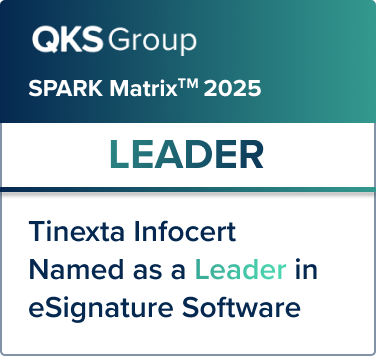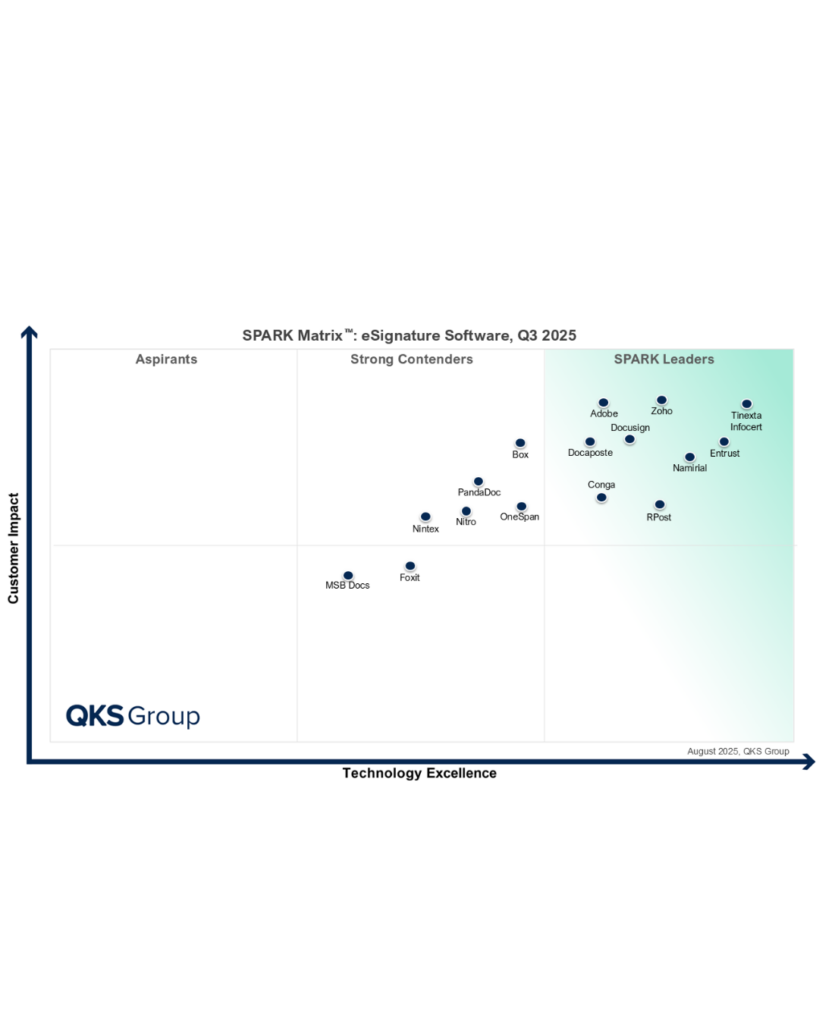SPARK Matrix: eSignature Software, 2025
Once again this year, Tinexta InfoCert has been recognized as a Leader in the SPARK Matrix: eSignature Software, 2025 by Quadrant Solutions.

Why the SPARK Matrix?
The SPARK Matrix: eSignature Software, 2025 research by Quadrant Knowledge Solutions provides a detailed and strategic assessment of the global electronic signature market, covering emerging technology trends, the competitive positioning of vendors, and future market developments.
The study delivers concrete insights for technology providers, helping them benchmark their capabilities, refine go-to-market strategies, and identify opportunities for innovation. At the same time, it supports buyers in evaluating vendor offerings based on technological excellence and customer impact.

Market Overview and the Growing Importance of QTSPI
The electronic signature software market is undergoing a structural transformation. What initially emerged as a simple digital alternative to the handwritten signature has evolved into a trust-based ecosystem, where differentiation among providers is increasingly measured by their ability to ensure regulatory compliance, secure identities, and document integrity.
This is confirmed by Abhishek Dubey, Analyst at QKS Group:
“Electronic signature software has become an essential pillar of digital transformation strategies across all industries, enabling organizations to execute legally compliant agreements in real time. The market is being reshaped by regulatory mandates such as eIDAS 2.0, the rise of architectures driven by Trust Service Providers (TSP), and the integration of Generative AI for document analysis.”
The importance of Qualified Trust Service Providers (QTSP) such as Tinexta InfoCert is therefore growing, as they provide signing environments compliant with the highest legal validity standards, particularly in the European context.
The security aspect is becoming increasingly crucial: “as electronic signature platforms move beyond simple signing to deliver secure, automated, and contextual workflows, enterprises must evaluate providers not only on ease of use, but also on their ability to guarantee trust, flexibility, and compliance at scale.”


